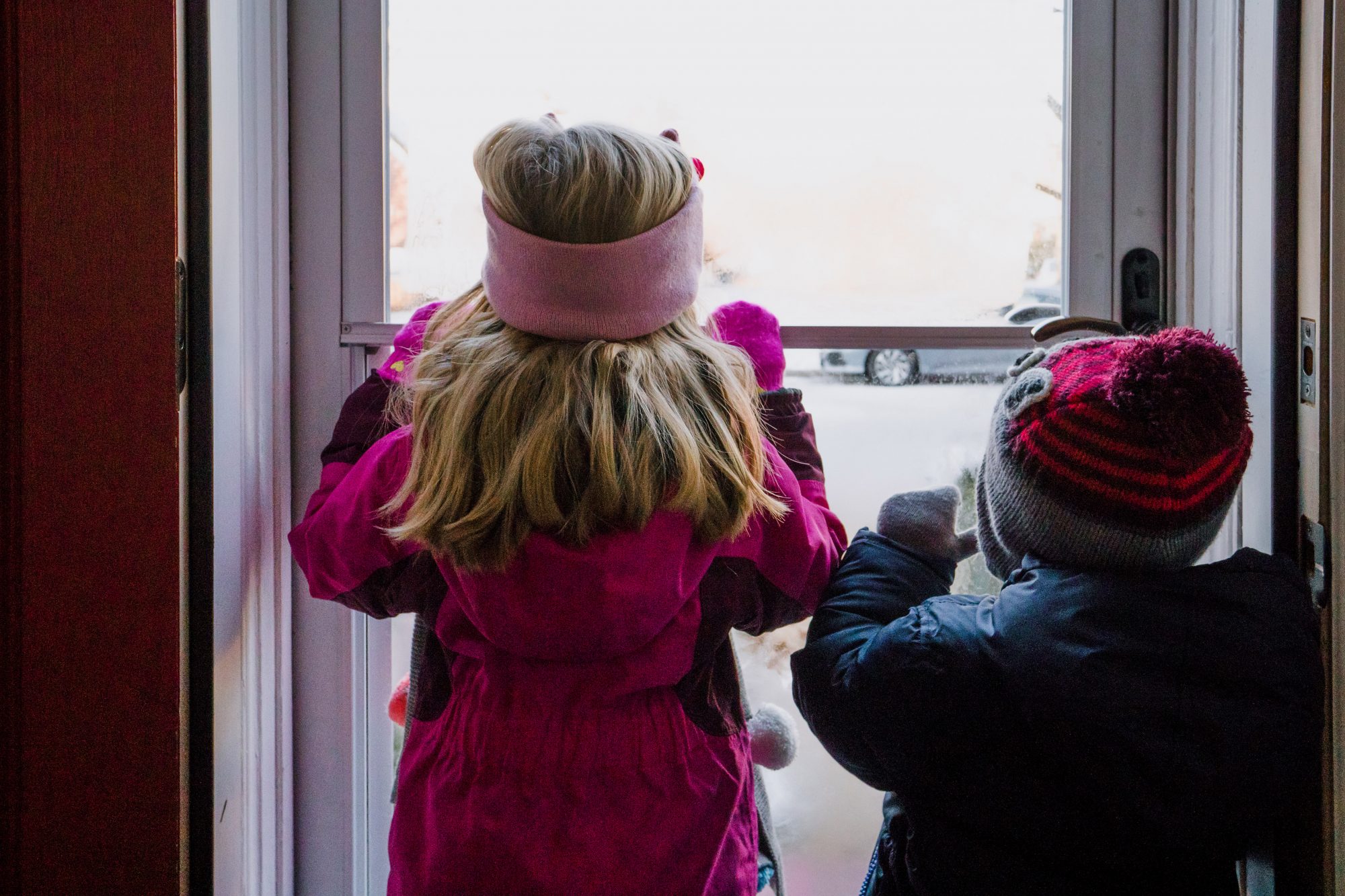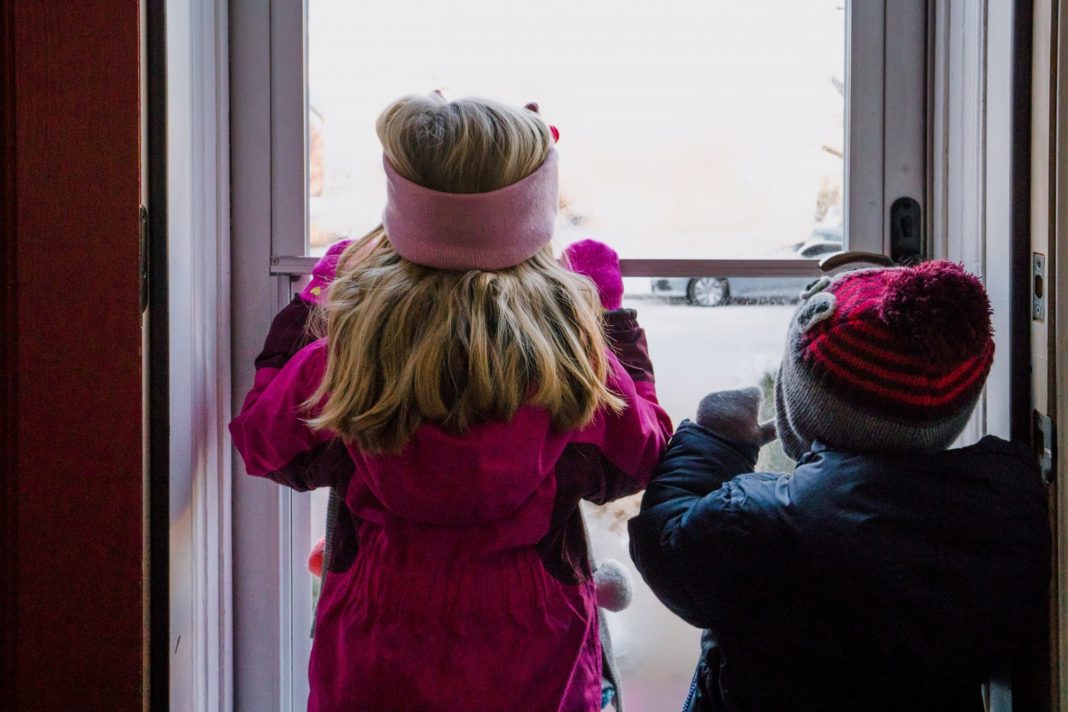Winter storms have been raging across the country, bringing along icy roads, slippery sidewalks, and freezing temperatures. And while snowstorms are the perfect excuse to relax by the fireplace, they can also be dangerous for families.
According to Ready.gov, a national public service campaign from the U.S. Government, winter storms raise the risk of frostbite, hypothermia, car accidents, and carbon monoxide poisoning. They can also cause power outages that cut off sources of heat and communication during brutally cold nights.
So how can you protect your loved ones from an impending winter storm? Check out these top safety tips that let you enjoy the snowfall instead of worrying about it.
Make a Family Emergency Plan
You probably have a family emergency plan for fires and tornadoes, but depending on where you live, you need one for snowstorms, too. Host a meeting with your children to brainstorm what you'll do if the storm gets severe. Who will you contact, and how will you find their phone number? Where should you meet if family members get separated? While natural disasters might scare children, coming up with a foolproof plan usually helps them feel a little safer.
Prepare a Household Emergency Kit
Don't be stuck without necessary supplies in a winter storm. Here are some ideas of what to keep in your household emergency kit:
Ready.gov also urges you to remember everyone's personal needs, including their medications.
Make a Car Emergency Kit
It's also important to keep a well-stocked snowstorm kit in the car. It's best to stay home if the forecast calls for severe winter weather, but you never know when you'll be caught in the flurries. Consider including the following items in your kit:
Also remember to winterize your car before the first snow of the year (install winter tires and wipers, service your vehicle to ensure it's working properly, replace windshield wiper fluid, check tire pressure, etc.). If the forecast calls for snow and you must travel, have a full tank of gas before setting out. Keeping your car's gas tank full will prevent the fuel line from freezing.
Winterize Your Home
Losing power will leave your family in the cold, but there's also another dangerous consequence: Pipes can burst from freezing temperatures. To prevent this, insulate water pipes in unheated areas and drain any pipes that sit unused in winter (swimming pool lines, outdoor hoses, etc.) You should also know how to turn off the main water supply. Learn more about preventing and thawing frozen pipes from the American Red Cross.
Ready.gov recommends keeping the cold weather outside with weather stripping, caulking, and insulation. Also check that smoke alarms and carbon monoxide detectors are in working condition. Finally, "insulate any water lines that run along exterior walls so your water supply will be less likely to freeze," says the Centers for Disease Control and Prevention (CDC).
Learn What To Do If the Power Goes Out
Back-up generators can be a lifesaver if the power goes out, but it's vital to use them properly. "Generators should be located at least 20 feet from any window, door, or vent and in a space where rain and snow will not reach them," according to the CDC. "Never using generators, gas or charcoal grills, camp stoves, or similar devices inside your home, in basements, in garages, or near windows. The fumes are deadly." (That said, your carbon monoxide detector should be in working order!)
If you have a wood-burning fireplace, you might want to stock up on firewood, which will allow you to heat your home if the power goes out. Families who plan on doing this should maintain fireplace upkeep, have their chimney inspected regularly, and ensure the fireplace is venting outside. Never use the stove to heat your home when the power goes out.
Keep your family warm with multiple layers of clothing and blankets. The American Red Cross recommends "layers of loose-fitting, lightweight, warm clothing" that can be added or removed when necessary. If you have a baby, don't put any soft bedding or pillows in the crib, as this increases the risk of sudden infant death syndrome (SIDS). Instead, dress them in warm clothing like sleep sacks or footed pajamas.
Stuffing towels under door cracks and closing windows maintains heat inside your home—and keeping the body fed and hydrated helps you fight the cold as well. Drink a mix of water and warm liquids, like broth. Finally, instead of using candles to light the house, the CDC recommends lanterns or battery-powered flashlights because they're less of a fire hazard.

Bundle Up When Playing Outside
Are your children eager to build snow castles and sled down the backyard hill? Bundle them up! The American Academy of Pediatrics recommends dressing young children in one more layer of clothing than an adult would wear in the same conditions. Start with a thin inner layer to wick moisture away from the skin. Avoid cotton, which soaks up sweat and holds it against the skin, accelerating heat loss; try a lightweight polyester or polypropylene fabric instead. Add two insulating middle layers (maybe a long-sleeved top and leggings) of similar materials, keeping them a little loose to trap insulating air between fibers. Top it all off with a wind- and waterproof outer shell. Hats, gloves, boots, and regular breaks are vital to preventing frostbite and hypothermia.
Watch Out for Frostbite and Hypothermia
Despite the cutesy name, frostbite is serious business: "The water in our bodies literally freezes," says Holly Benjamin, M.D., a pediatric sports medicine specialist at the University of Chicago. The most common physical symptom is a blister, but by that time it's too late to prevent damage. Tell your child that if they notice any pain, decreased sensation, tingling, or numbness, they should head inside immediately, where you should run warm—but not hot—water over the affected body part.
Hypothermia is characterized by low body temperature, and it can lead to shivering, confusion, clumsiness, slurred speech, and lips turning blue. If you notice these symptoms, take them inside immediately and focus on warming the center of the body (head, neck, groin, and chest). Get medical care as soon as possible.
Remove Snow Safely
Because shoveling snow is so strenuous, it can increase blood pressure and heart rate, possibly raising the risk of injury or heart attack. Don't push yourself, and call for help if you notice any worrisome symptoms. The American Red Cross recommends stretching before shoveling to warm up your body. Also take care to avoid slips on ice.
































